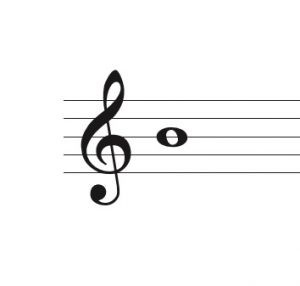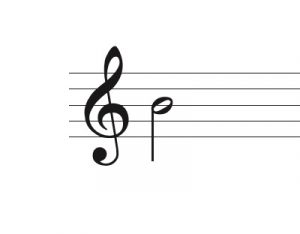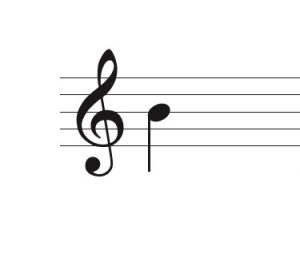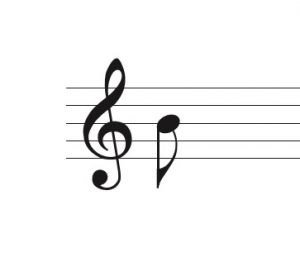13 Introduction to Basic Rhythms
Being able to recognize different sounds is an important part of ear training and developing as a musician. It is also important to have the ability to look at a piece of music and understand how it will sound without having heard it before. While this can be done with notes and pitches, we are going to begin by looking at rhythms. Concepts like beats, pulse, time signatures, and different note types can all be found in Chapter 14 of Introduction to Music Theory and Rudiments.
Simply put, rhythms are the length (duration) of different notes. For now, we are going to focus on recognizing what they sound like, focusing on common time or 4/4 as it is the most commonly used time signature in pop/contemporary music. We will also only be focusing on notes and not rests. For more information on rests, read Chapter 14 in Introduction to Music Theory and Rudiments.
In 4/4, there are four beats to a bar. A whole note (see below) gets 4 counts. A half note gets 2 counts, a quarter note gets 1 count, and a single eighth note gets 1/2 a count.




More information on determining what the different types of notes look like can be found in Introduction to Music Theory and Rudiments.
When seeing a series of notes on printed music, rather than humming or singing the notes as we have in the rest of this book, to “vocalize” rhythms, a commonly used technique is to count out loud while clapping the rhythm.
Video 13.1 Rhythms. [Video transcript – See Appendix B 13.1]

